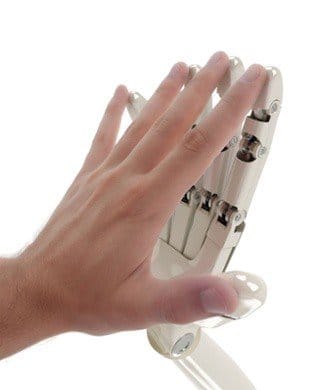How chatbots fit into conversion marketing?
Since Facebook’s F8 conference in April, chatbots have been all rage. Everybody from mainstream news to tech and business blogs are talking about them. So, let’s add an educated guess about chatbots’ role in conversion marketing in the mix.

Since Facebook’s F8 conference in April, chatbots have been all rage. Everybody from mainstream news to tech and business blogs are talking about them. The conversation topics vary from how chatbots will change online retail to them making modern websites obsolete. And then Google entered the fray with Allo.
So, let’s add an educated guess about chatbots’ role in conversion marketing in the mix.
Chatbots mostly live within apps like Facebook Messenger and Slack. Conversion marketing is about converting an online visitor to a customer using tools such as pop-ups, banners, and live chat. At the first sight, it would seem there is not much common with these topics.
However, these chatbots can be built in or integrated with other chat solutions, including live chats widely used in e-commerce space. And yes, that possibility is coming to giosg platform later this year!
First generation of chatbots lead the revolution
The first examples for chatbots are up and running. Using Messenger you can order an Uber or order flowers to your Facebook friends. A chatbot can handle simple orders and fill up order forms for customers based on the conversation it is having with a website visitor or app user.
For example, insurance companies could utilize this sort of capabilities on their websites. Today, an insurance company would use live chat to connect with potential customers on-site. Then chat agent would instruct visitor to buy most suitable insurance online, place the order on behalf of the buyer, or transfer conversation to another channel for finalizing the deal. In this kind of simple cases, the bot could replace human elements in chat. And transfer complex cases for customer service representative (chat or phone).
In online retail, chatbot can be used to save shopping carts being in danger to be abandoned. Imagine the following scenario: Visitor has collected items worth dozens of euros in his cart and started the checkout process. Then, for some reason, returns to review product pages. At this point the risk of shopping cart abandonment is high.
This time, chatbot plays the role of shopping cart savior.
In an earlier blog post, I suggested using a pop-up with a discount code to encourage the customer to complete the purchase. This time, chatbot plays the role of shopping cart savior. The bot sends automated message to the visitor offering 10% discount if the order is completed now. The visitor can place the order simply by answering ”Yes” to the chatbot and giving delivery and credit card details (would you give these to a human agent?) during the conversation. Done. The order has been placed even though the visitor never returned to complete the remainder of the checkout process.
What will the next generation be like?
In not so distant future, it is entirely possible that brands develop chatbots for online retailers to place within their online store to promote brands’ range. Adidas could have a chatbot on retailer’s product page answering product specific questions. And if the visitor has been identified (for example logged in using Facebook) the conversation could continue in Messenger — even after the potential customer has left the online store.
No matter how right or wrong my vision is, it is quite clear that chatbots have a great potential for shaking current status quo. What do you think, how chatbots will change e-commerce in the coming years?
--
This writing is originally published in giosg.com Ltd’s blog on May 19, 2016. Read the original.

![Three Principles Of A Successful Live Chat Operation [2020 Edition]](/content/images/size/w960/2020/01/black-and-white-dark-decoration-faces.jpg)
![Three Principles Of A Successful Live Chat Operation [2019 Edition]](/content/images/size/w960/2019/04/3-principles-2019-header.jpg)

